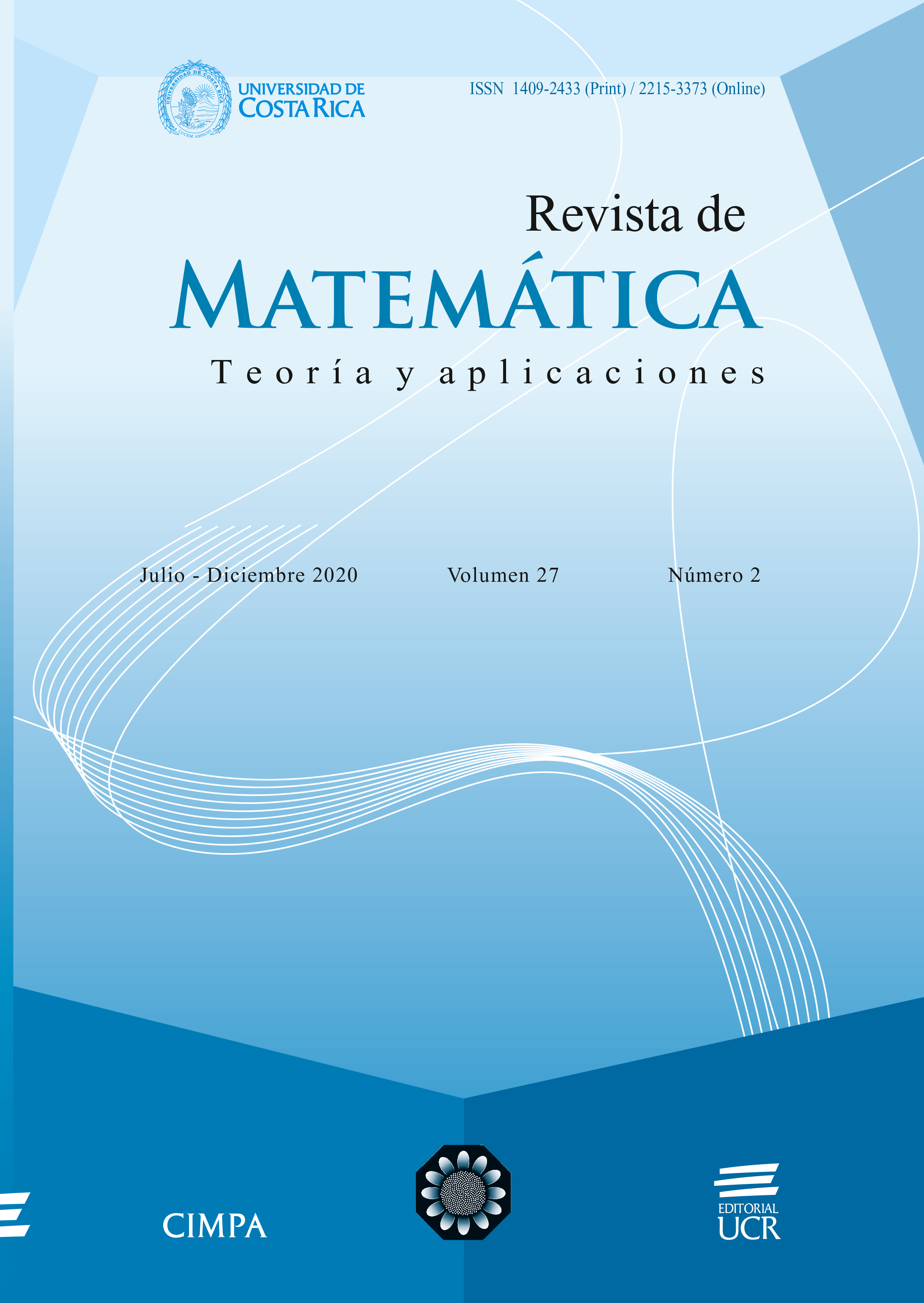Abstract
The goal of this work is to evaluate the robustness of several Confirmatory Factor Analysis fit indices (SRMR, RMSEA, TLI, CFI and GFI) to the precense of outliers. For this purpose, it was planed a simulation study with 3 × 4 × 2 conditions: sample size (100, 200 and 500), outliers percentage (0%, 1%, 5% and 10%) and number of variables with outliers (1 and 2). The baseline data sets (0% of outliers) by sample size were simulated from a distribution which fit to a CFA with three factors correlated. Data bases with outliers were created from substitution of observations in baseline data sets. Later, in every data base was estimated a CFA with three factors correlated. It was obtained that all indices with classical cutoffs were robust to outliers with sample sizes of 200 and 500. With 100 observations, it was obtained that fit indexes were robust to outliers, but
considering cutoffs adjusted by the factorial structure and the sample size.
References
T.A. Brown, Confirmatory Factor Analysis for Applied Research, The Guilford Press, New York, 2006.
M. Cea, Análisis Multivariable Teoría y Práctica en la Investigación Social, Editorial Síntesis, Madrid, 2002. Doi: 10.5944/empiria.6.2003.941
L.T. Hu, P.M. Bentler, Fit indices in covariance structure modeling: Sensitivity to underparameterized model misspecification, Psychological Methods 3(1998), no. 4, 424–453. Doi: 10.1037/1082-989X.3.4.424
L.T. Hu, P.M. Bentler, Y. Kano, Can test statistics in covariance structure analysis be trusted?, Psychological Bulletin 112(1992), no. 2, 351–362. Doi: 10.1037/0033-2909.112.2.351
K.G. Jöreskog, A general approach to confirmatory maximum likelihood factor analysis, Psychometrika 34(1969), no. 2, 183–202. Doi: 10.1007/BF02289343
D. Kaplan, Structural Equation Modeling: Foundations and Extensions, 2nd. Ed., Sage Publications, Thousand Oaks CA, 2009. Doi: 10.4135/9781452226576
E. Koehler, E. Brown, S.J. Haneuse, On the assessment of Monte Carlo error in simulation-based statistical analyses, The American Statistician 63(2009), no. 2, 155–162. Doi: 10.1198/tast.2009.0030
M. Lai, J. Zhang, Evaluating fit indices for multivariate t-based: Structural equation modeling with data contamination, Frontiers in Psychology 8(2017), 1286–1298. Doi: 10.3389/fpsyg.2017.01286
S.A. Mulaik, Linear Causal Modeling with Structural Equations, Chapman and Hall/CRC, Boca Raton FL, 2009.
S.A. Mulaik, L.R. James, J. Van Alstine, N. Bennett, S. Lind, C.D. Stilwell, Evaluation of goodness-of-fit indices for structural equation models, Psychological Bulletin, 105(1989), 430–445. Doi: 10.1037/0033-2909.105.3.430
J. Pek, R.C. MacCallum, Sensitivity analysis in structural equation models: Cases and their influence, Multivariate Behavioral Research 46(2011), no. 2, 202–228. Doi: 10.1080/00273171.2011.561068
R Development Core Team, R: A Language and Environment for Statistical Computing, R Foundation for Statistical Computing, Vienna, 2007. https://www.r-project.org/
L. Rojas-Torres, Construcción y validación del índice de calidad de la gestión en la educación superior mediante el análisis factorial confirmatorio, Tesis de Maestría, Universidad de Costa Rica, 2014.
Y. Rossel, Lavaan: An R package for structural equation modeling, Journal of Statistical Software 48(2012), no. 2, 1–35. Doi: 10.18637/jss.v048.i02





